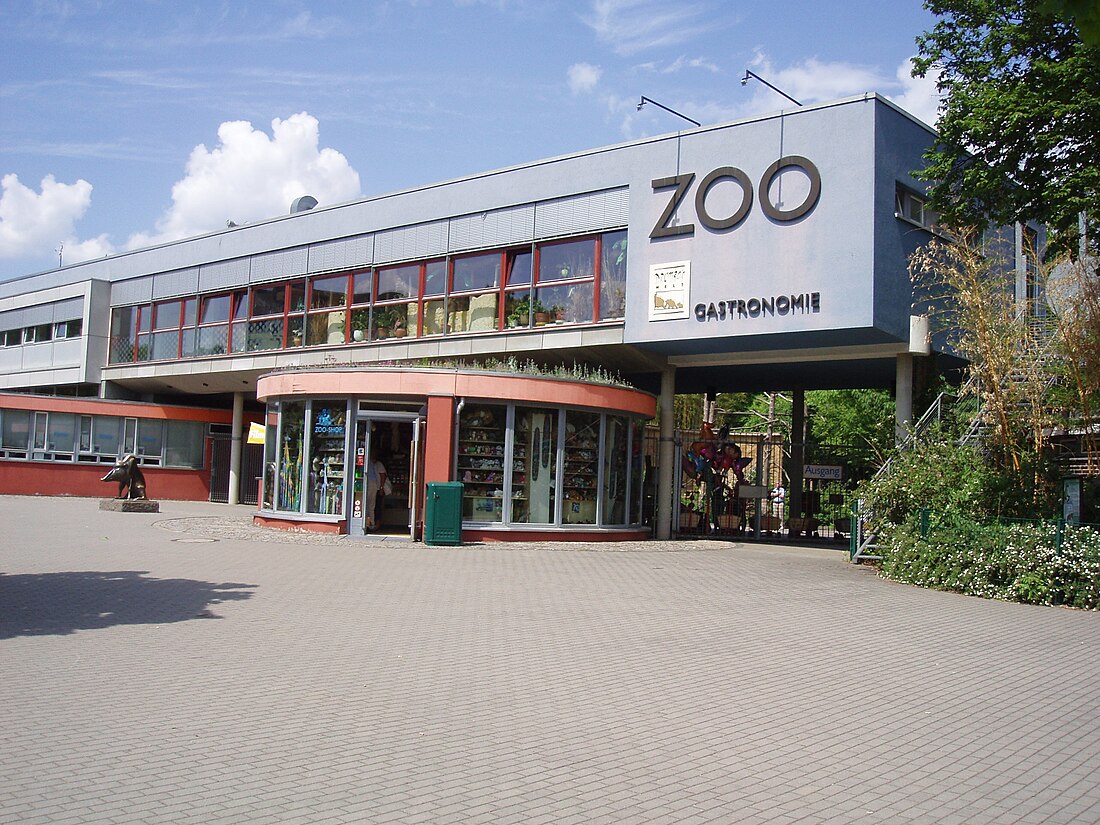Dresden Zoo
Animal park in Saxony, Germany From Wikipedia, the free encyclopedia
Dresden Zoo, or Zoo Dresden, is a zoo in the city of Dresden, Germany. It was opened in 1861, making it Germany's fourth oldest zoo. It was originally designed by Peter Joseph Lenné.[1]
| Dresden Zoo | |
|---|---|
 ZOO Dresden - gate | |
 | |
| 51.0374°N 13.7539°E | |
| Date opened | 1861[1] |
| Location | Dresden, Free State of Saxony, Germany |
| Land area | 13 hectares (32 acres)[1] |
| No. of animals | 3000[1] |
| No. of species | 400[1] |
| Memberships | WAZA,[2] EAZA,[3] VDZ[4] |
| Major exhibits | Africa House, Lion & Caracal Enclosure, Aquarium and Terrarium, Giraffe House, Birds, Prof. Brandes House, Orangutans, The Zoo Below the Ground[5] |
| Website | www |

The zoo is located on the southern edge of the Großer Garten (Great Garden), a large city centre park. The zoo houses about 3000 animals of almost 400 species, especially Asian animals.[1] It is a member of the World Association of Zoos and Aquariums (WAZA) and the European Association of Zoos and Aquaria (EAZA).
The zoo is served on its southern side by tram lines 9 and 13 of the Dresdner Verkehrsbetriebe, the local municipal transport company. On its northern side is the Zoo station of the Dresdner Parkeisenbahn, a minimum gauge railway through the Großer Garten that is largely operated by children.[6][7]
In literature
At the end of the short story Tobermory (1909) by Saki, the visiting Englishman Cornelius Appin is killed by an elephant at the Dresden Zoological Garden.
In the novel Extremely Loud & Incredibly Close (2005) by Jonathan Safran Foer, Thomas Schell is told to shoot all of the carnivores that had escaped from their cages during Dresden's bombing of World War II. He didn't know which were carnivorous and which weren't, so he was told to kill them all. The animals he killed included an elephant, an ape, two lions, a bear cub, a camel, a rhinoceros, a zebra, a giraffe, and a sea lion.[8]
History
In 1859, at the suggestion of the Dresden "Association for Chicken Breeding", a committee was formed which, in collaboration with the city administration, initiated the establishment of a zoo. Peter Joseph Lenné acted as landscape architect and the architect Carl Adolph Canzler was responsible for all of the zoo's buildings. King Johann made part of the royal Great Garden available. After two years of construction, the zoo was opened on May 9, 1861. The zoo's first director was Albin Schoepf, who built the zoo with the help of his son and later director Adolph Schoepf. Since 1873, the Dresden Zoo has cared for great apes, especially orangutans, with which the zoo gained worldwide attention in 1927. For the first time, the growth of an orangutan and its natural rearing by its mother were observed and documented. From 1910 to 1934, Gustav Brandes was in charge of the zoo and laid the foundations for a modern zoo. He restructured the zoo from a pure animal show to a species-appropriate environment in which animals were kept in a natural environment.[9]
See also
References
External links
Wikiwand in your browser!
Seamless Wikipedia browsing. On steroids.
Every time you click a link to Wikipedia, Wiktionary or Wikiquote in your browser's search results, it will show the modern Wikiwand interface.
Wikiwand extension is a five stars, simple, with minimum permission required to keep your browsing private, safe and transparent.
